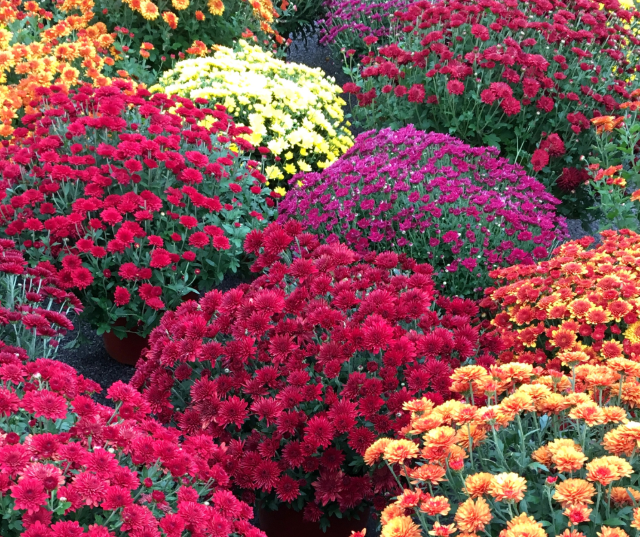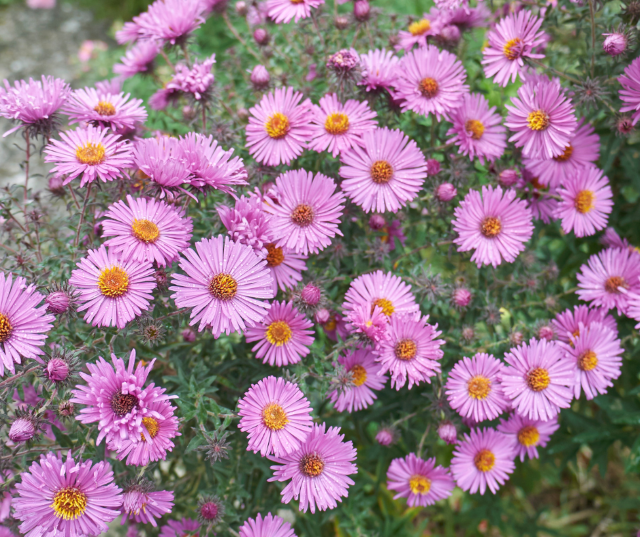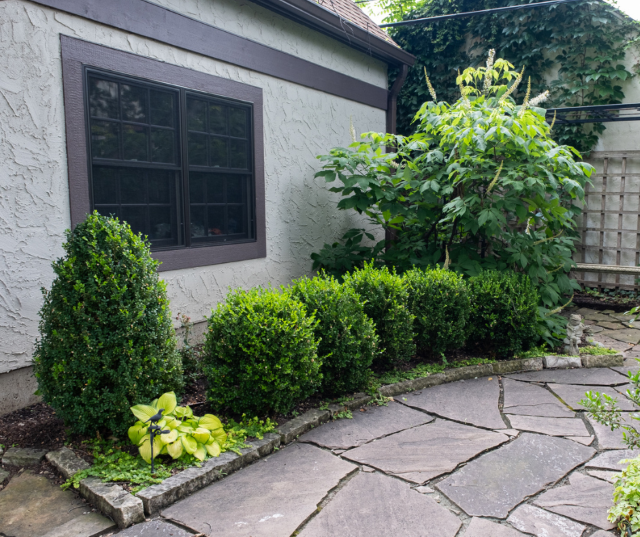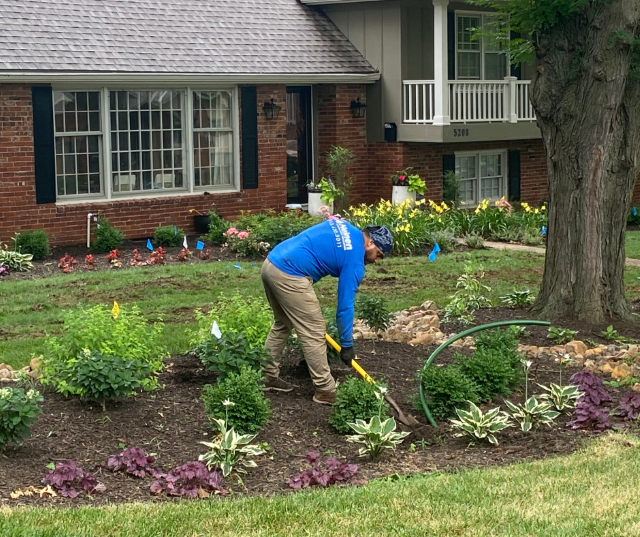Fall-blooming flowers + Fiery hues of changing foliage + Deep emerald evergreen shrubs = Spectacular visual vistas for Autumn!
Well-planned landscape design takes into account every season of the year. By integrating plants with a wide range of temperature preferences and blooming seasons, a landscape can naturally shift from summer to autumn without trending to dull and withered. Fall landscapes can dazzle with plenty of hardy perennials, late-blooming flowers, multi-season shrubs, and more!
Pops of Autumnal Color
Late-blooming flowers play a major role in maintaining visual interest throughout fall. Even when temperatures begin to cool, outdoor spaces can remain vibrant and inviting through the use of fall-filling blooms that flourish well into the season.
Thoughtful landscape design considers winter, spring, summer, and fall. Instead of plantings with singularly aligned blooming seasons, landscape professionals strategically include a variety of plants that bloom best in different seasons. Spring’s colors fade just as summer’s take center stage, and when cooler temperatures and shorter days arrive, autumnal blooms step in. This well-planned progression keeps a home’s landscaping dynamic and fresh all year long.

Chrysanthemums come in a variety of hues, perfect for complementing fall landscapes.
Chrysanthemums, also known as mums, are the quintessential flower of fall. These dense, dome-shaped clusters of blooms come in a range of vibrant colors, including orange, yellow, red, pink, and white. But be wary when planting mums. Many big-box stores sell plants meant for short-term display rather than for long-term installation. For mums that stick around, use hardy varietals and give them plenty of time to establish strong roots.

Perennial varieties of asters are great, hardy fall plantings.
Asters are another fall favorite. Their striking displays of blue, pink, and white brighten up fall landscaping with daisy-like blooms. Asters in particular are excellent for attracting key pollinators during their late-season migration period. These blooms last well into late fall and provide vertical structure to landscape beds. Planted asters need plenty of space around them that allows air to circulate and avoid mildew growth.
Large-Scale Plantings
Late-blooming perennials provide seasonal color, but shrubs and trees form the backbone of a well-designed landscape year-round. They play a critical role in providing structure as other plantings fade. Shrubs and trees shift in color with the season, with their beautiful foliage, rich texture, and enticing pops of colors from seasonal berries and seed pods.

Layer textures and vary heights to further boost visual interest and add privacy.
The dynamic foliage of deciduous shrubs and trees transitions in fall to stunning displays of red, orange, gold, and even deep burgundy. Strategically, they add depth and dimension, drawing attention to specific areas of a property – or create focal points that are completely their own. And don’t forget evergreen varietals! While green fades from most landscaping in the fall, these plantings remain vibrant and lush year-round.
Use Heinen’s free Online Plant Catalog to start planning your fall landscape upgrade. This handy resource features nearly 200 plantings selected by the outdoor experts at Heinen for their ability to thrive in Kansas City’s climate. Each listing includes useful details, including mature sizes and blooming seasons, making it simple to plan a lush, well-thought-out landscape design with no off-season!
Click here to view Heinen’s Online Plant Catalog!
Fall Landscape Upgrades
Timing is as crucial to fall landscaping as the selection of the right plantings. Transplanting trees and shrubs typically places significant stress on plants, disrupting root systems and natural growth cycles. Fall, however, provides ideal conditions for installing new plantings with minimal risk of transplant shock.

Work with Heinen’s team of landscape specialists for professional fall landscaping upgrades!
Benefits of Planting in Fall:
1. Warm Soil & Cool Temperatures
In the fall, soil retains warmth from the summer months, allowing roots to grow, while the cooler temperatures reduce moisture loss from leaves.
2. Strong Root Development
Plantings are focused on storing food and moisture in root systems during fall months instead of producing new foliage or blooms.
3. Less Watering by Hand
New plantings need consistent moisture to establish strong root systems. Summer’s drought-like conditions demand frequent hand-watering, which can strain both plants and homeowners!
4. Reduced Pests, Diseases, and Weeds
Common pests, diseases, and weeds tend to die back in cool weather, allowing new plantings to enjoy a healthy, stress-free start.
5. Head Start on Spring
Most homeowners make their major landscape upgrades in the spring, but starting in the fall puts you ahead of the game. While newly planted spring varieties are just taking root, fall plantings are ready to thrive and shine after winter’s thaw!
Whatever goals you have for your version of the great outdoors this fall, don’t go it alone! Contact the landscaping specialists at Heinen for help turning your vision into a reality!





